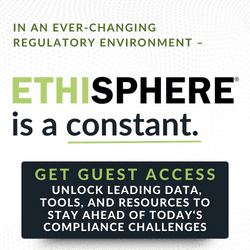Relatively speaking, the dust has barely settled on the highly publicized antitrust challenge to the merger of Whole Foods and Wild Oats by the Federal Trade Commission. Most practitioners will remember the rants of Whole Foods’ Chief Executive Officer John Mackey plastered across the business section of the Wall Street Journal and the use of the company’s documents by the government to establish its case as to why the merger was anti-competitive. For those who don’t recall, among other evidentiary gems, the company’s documents included statements by Mr. Mackey to the Whole Foods’ Board of Directors advising them that a central purpose of the transaction was “avoid[ing] nasty price wars” between competitors.
Fast forward five years and the same bad document scenario upended Bazaarvoice’s acquisition of PowerReviews. After a three-week trial that included 40 witnesses, the reading of more than 100 depositions and the introduction of 980 exhibits, the trial court upheld the government’s antitrust challenge to the transaction and Bazaarvoice’s own documents were the crux of the government’s evidence against the transaction. While the transaction may have been problematic in any event, the evidentiary picture painted by the company’s documents self-satisfied the government’s burden of proof.
A quick look at what Bazaarvoice’s documents stated is illustrative of the evidentiary corner into which documents can back a company. For those unfamiliar with the antitrust review of mergers, the basic law, set forth in Section 7 of the Clayton Act, is straightforward: Section 7 prohibits mergers, the effect of which would be to substantially lessen competition. With that backdrop:
- First, across at least 16 separate documents (and perhaps many more), Bazaarvoice described PowerReviews as “the only competitor,” “our primary competitor,” “#1 competitor,” “key competitor,” “largest competitor,” “our only meaningful competitor.” And likewise, PowerReviews described Bazaarvoice as its “#1 competitor” in what was “essentially a duopoly.”
- Second, Bazaarvoice described the competitive dynamic in the marketplace as a battle with PowerReviews, where PowerReviews was “aggressively going after our existing customer base,” “disrupting our new client sales efforts” by “lowering price floors” and “using their wins” in one market “to approach our clients about other services.” Indeed, customers “brought in [PowerReviews] as a price-pressure lever (especially for the larger accounts”).
- Third, Bazaarvoice listed one reason to consider the PowerReviews acquisition as the “elimination of our primary competitor in both the U.S. and EU” — a transaction “potentially taking out [its] only competitor.” Bazaarvoice opined that the deal would offer “relief from the price erosion that Sales experiences in 30 to 40 percent of deals,” “reducing comparative pricing pressure” and creating “a powerful competitive moat.”
The above, coupled with testimony at trial, led the court to the conclusion: “The evidence that Bazaarvoice and PowerReviews expected the transaction to have anti-competitive effects is overwhelming.”
Documents in both the Bazaarvoice and Whole Foods cases were crippling to any defense the companies could have mounted. And this type of situation occurs not only in the antitrust world, but in other aspects of civil litigation and government investigations. In a climate where email, text messages and the like are the primary means of communication and employees tend to be less careful about what they write in these informal communication forums, companies need to exercise caution. Few employees today heed the cautionary dogma: “picture everything you write on the front page of the New York Times.” So what can a company do to protect itself?
- First, train and retrain. At least annually, companies should conduct training on the importance of documents. That training should include the types of statements that should be avoided as well as topics reserved for internal discussions only. Employees should understand what they can and cannot say to competitors. This is especially true for senior management, whose words likely have greater evidentiary value in a civil suit than those of lower-level employees.
- Second, do not over retain. Companies should employ a document retention policy that balances the need to keep accurate records (and abide by retention statutes) with the risk of harboring bad documents and amassing gigabytes of unhelpful information.
- Third, audit company files. Today’s technology permits compliance staff to easily and unobtrusively audit company electronic documents. Senior management’s documents are probably the most important to audit. And while senior management may be more resistant to such audits than other employees, a brief explanation of the adverse consequences of creating and retaining bad documents should ease their concerns. At the end of the day, knowing what is in the company’s files is better than being surprised about it during litigation discovery.



 About the Author
Timothy Cornell, counsel in Clifford Chance’s U.S. Antitrust Practice, advises clients on antitrust issues in government civil and criminal investigations, the regulatory review of mergers and acquisitions, intellectual property and technology licensing, supply and distribution agreements, joint venture formation, retail pricing issues, horizontal and vertical restraints, private party civil litigation, and the adoption of antitrust best practices.
Mr. Cornell has advocated on behalf of more than two dozen clients before the U.S. Federal Trade Commission and U.S. Department of Justice, representing transacting parties and parties opposing transactions between their competitors. Mr. Cornell brings significant experience in assisting clients through government antitrust investigations, representing targets of governmental investigations and non-parties cooperating with the government. He has litigated antitrust and other high profile cases before arbitration panels, and in federal and state courts across the U.S.
Mr. Cornell obtained his JD from Georgetown, cum laude, and his BS in political science from the United States Naval Academy.
Contact information:
Timothy J. Cornell
About the Author
Timothy Cornell, counsel in Clifford Chance’s U.S. Antitrust Practice, advises clients on antitrust issues in government civil and criminal investigations, the regulatory review of mergers and acquisitions, intellectual property and technology licensing, supply and distribution agreements, joint venture formation, retail pricing issues, horizontal and vertical restraints, private party civil litigation, and the adoption of antitrust best practices.
Mr. Cornell has advocated on behalf of more than two dozen clients before the U.S. Federal Trade Commission and U.S. Department of Justice, representing transacting parties and parties opposing transactions between their competitors. Mr. Cornell brings significant experience in assisting clients through government antitrust investigations, representing targets of governmental investigations and non-parties cooperating with the government. He has litigated antitrust and other high profile cases before arbitration panels, and in federal and state courts across the U.S.
Mr. Cornell obtained his JD from Georgetown, cum laude, and his BS in political science from the United States Naval Academy.
Contact information:
Timothy J. Cornell








